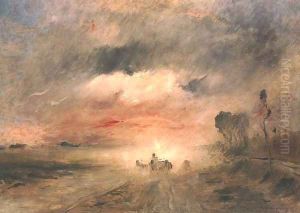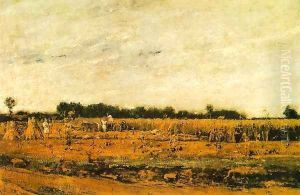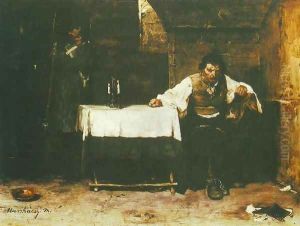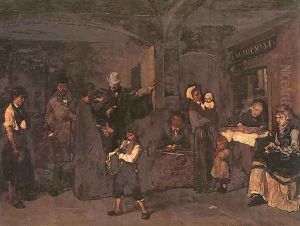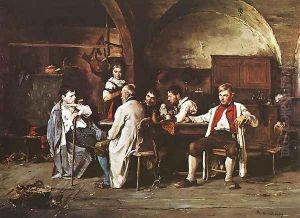Mihaly Munkacsy Paintings
Mihaly Munkacsy was a Hungarian painter renowned for his large-scale genre paintings, historical canvases and detailed depiction of life in the 19th century. Born as Michael Lieb on February 20, 1844, in Munkács, then part of the Austrian Empire, now Mukačevo in Ukraine, he was raised in a family of German origin. His childhood was marked by poverty and the early loss of his parents.
Munkacsy started his artistic journey as an apprentice to a local painter before moving to Pest, where he studied under the guidance of Karl Lotz. His early works, influenced by the academic style, did not gain much attention, but his fortunes changed after he moved to Paris in 1867. It was there that he adopted the more vibrant and emotionally charged style of naturalism, and his career began to flourish.
He gained international acclaim with his masterpiece 'The Last Day of a Condemned Man' in 1869, which depicted the harrowing moment before an execution and showcased Munkacsy's skill in dramatic composition and human expression. This piece was followed by a series of large-scale works, including 'Milton' and 'Christ before Pilate', the latter of which became part of his famous Christ Trilogy.
Munkacsy's style evolved through his career, moving from genre scenes to more ambitious historical paintings and eventually to a grander, more dramatic canvas. His work was characterized by a rich palette, meticulous attention to detail, and an ability to capture the psychological depth of his subjects.
Despite suffering from a mental illness in his later years, Munkacsy continued to paint. His last years were spent between Germany and Hungary, and he passed away on May 1, 1900, in Endenich, Germany. Today, Munkacsy is remembered as one of Hungary's greatest artists, and his work continues to be celebrated for its emotional power and technical mastery.


